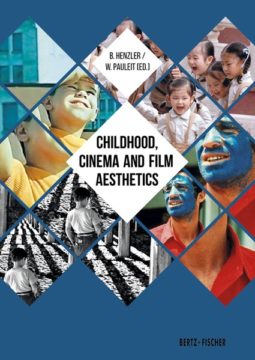Next to love and death, childhood is one of the universal topics of cinema. Films determine the view on childhood and allow children to present themselves – differently than in other media. Films convey an experience of childhood and can present us with the perspective of child figures. Films are also an expression of childhood memories: of those who make films and of those who watch films as children and are influenced by them. This book focuses on the relationship between cinema and childhood with regard to the aesthetics, mediality and cultural history of film. It presents a variety of current positions on three main topics: child figures in film, childhood as the spectators’ experience and the role of childhood in the production process.
The topic of childhood figures broaches the question what images are constructed by children and childhood in films, as well as the question of how children as actors embody and shape film figures. As to the question of childhood as spectator’s experience the articles included in this volume discuss films conveying the perception and experience of children. This also includes film theories referring to the gaze of the child. The question of the role of childhood in the production process takes us to those producing films. How do adult filmmakers refer to the experience of childhood – as biographic memory or as an aesthetic strategy of play?
The contributions cover a wide range of interdisciplinary perspectives, such as film theory, psychoanalysis, health science, film production. They deal with a kaleidoscope of films from the beginnings of film history to the present – experimental, documentary and fictional.
The contributors: Alejandro Bachmann, Alain Bergala, Christian Bonah, Joël Danet, Bettina Henzler, Vicky Lebeau, Karen Lury, Matthias Müller, Daniel Wiegand
- Veröffentlicht am Samstag 11. Mai 2024 von Bertz und Fischer
- ISBN: 9783865052575
- 132 Seiten
- Genre: Film, Musik, Sachbücher, Theater
